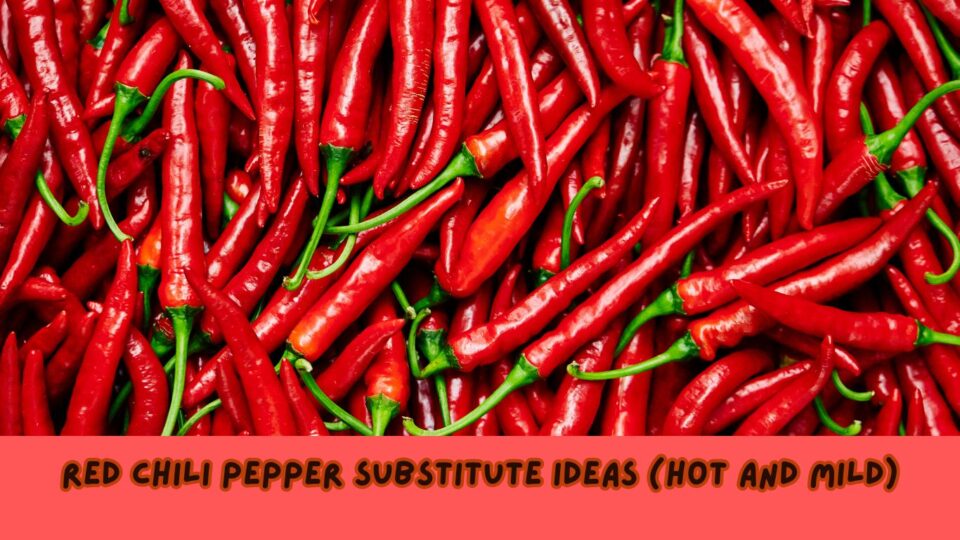Find yourself in need of a red chili pepper substitute? You’ll want something that brings a similar heat, color, and flavor to the recipe. Or, perhaps you’d rather not have that heat, while maintaining other aspects of the recipe.
While most of us enjoy the heat and spiciness that red chili peppers bring to the food, some might want to lower that heat. Or, there might be other reasons, from availability to preference. So, there are several aspects to consider for a good alternative to red chili peppers.
So, for this article, we’ll discuss the substitutes and options, while also considering the need and preferences for these changes.
For a quick overview, top red chili pepper substitutes are serrano pepper, cayenne pepper, jalapeno, chili powder, chili flakes, paprika (regular or hot), and banana pepper.
Now, let’s get to the details of the substitutions and what to expect.
Table of Contents
Red Chili Pepper Qualities And Substitution Checklist
If you’re in a situation where you need a red chili pepper substitute, you have to consider the qualities of these peppers that you wish to preserve in the recipe.
The heat and spiciness they bring to the food, is of course, the first quality to consider and herein also lies a decision – how hot do you want your food to be! This is where you decide if you want your food to be hotter, the same, or less hot and spicy than what it would be with conventional red chilies.
Since heat is a primary quality of chilies, how hot you want your food to be becomes a primary concern for the substitution. You can pick cayenne peppers or serrano peppers when you want more heat, chili flakes or powder to keep the heat exactly where you want it, or something like banana peppers or regular paprika when you don’t want the heat.
Deeper flavors and texture are other qualities to consider. Apart from heat and spiciness, red chilies also bring a nice texture to the food, along with their unique flavor. This is more important if they’re added later in the cooking process, where the colors, texture, and deeper flavors are mostly intact.
At this point, you could pretty much use your choice of red chilies as a substitute. Things like cayenne pepper, tien tsin chilies, and more could work. After all, if they’re added later during cooking, they don’t add much spiciness to the food. So, those who want the chili can enjoy them straight, while those looking to avoid heat can just skip eating them.
However, if the recipe requires them earlier in the cooking process, you might want to pick depending on the heat you can handle.
Where stronger chili flavors are your main concern, look at jalapenos, poblano peppers, and paprika, and choose according to your desires for flavors and heat.
Top Red Chili Pepper Substitutes To Consider
1. Cayenne Pepper
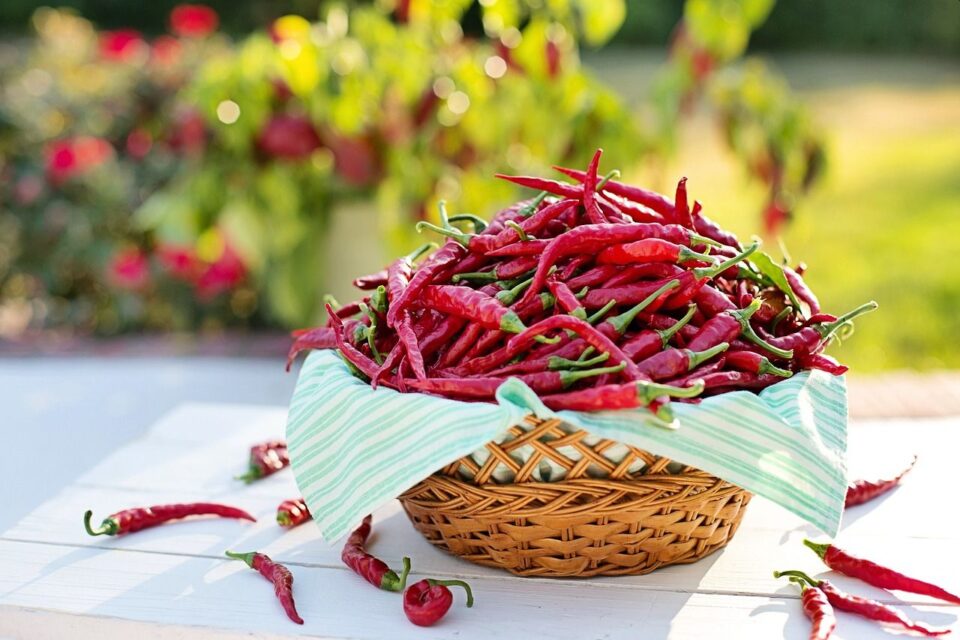
Bright red and showing off the classic chili shape, cayenne peppers are a great substitution option for red chilies in most recipes. If you want things on the spicier side, cayenne peppers have you covered.
The bright red peppers have excellent color, texture, and offer medium to high heat. For reference, if you’re using conventional peppers, cayenne peppers are likely to be hotter. These are fairly popular for Thai recipes stateside, where Thai red peppers may not be so easily available. They’re also popular with most recipes where the color and heat they offer is prized.
2. Serrano Pepper
Expect more heat and flavor from these smaller and stout chili peppers. Serrano peppers are usually harvested when green, but continue ripening after harvest as well. There’s a good chance you’ll find them red by the time they reach a store near you.
They are significantly hotter than conventional red chilies, so pick these with caution. That said, serrano peppers aren’t very widely available. While often used in the southwest USA, they can be difficult to find elsewhere.
3. Chili Powder Or Chili Flakes
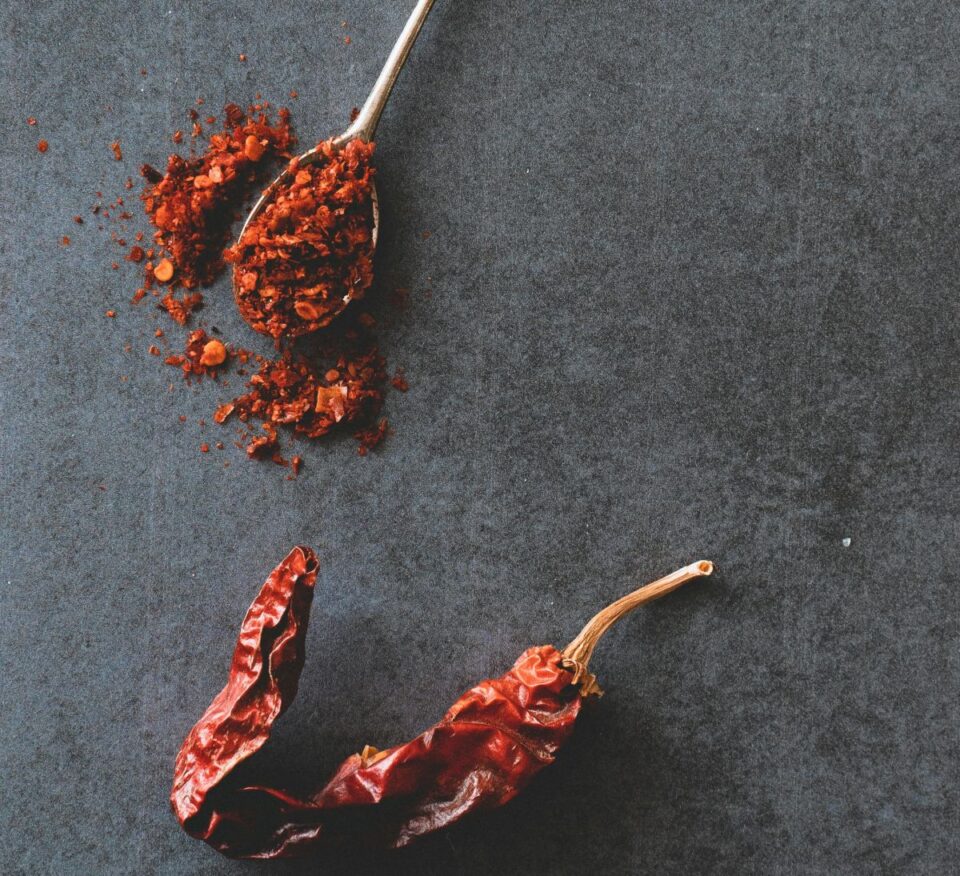
I’ll start with clarifying that chili powder and chili flakes are not the same thing. They are different things and you can expect chili powder to be relatively hotter, while the red chili pepper flakes have more of the deep red hues of chili.
So, while these are different things, they have a similar role to play where being a red chili pepper substitute is concerned.
If you want tinges of that deep red color in your food along with the chili flavor, you can use chili flakes in place of red chili peppers. This option can also be milder than using conventional red chilies.
When you want a bit of color, but also some heat, chili powder can do the trick.
However, keep in mind that chili powder may also contain other ingredients like salt and spices.
Similarly, the heat from chili flakes will depend on the type of chili used.
So, read the product labels to ensure you’re getting exactly what you want. This way, there won’t be an unexpected twist in your recipe.
4. Banana Pepper
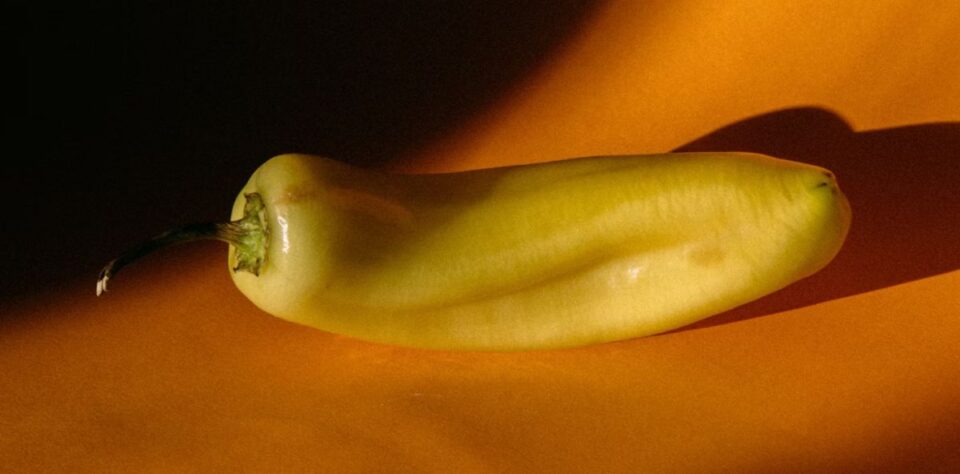
These peppers get their name from their yellow color, which is more reminiscent of bananas than pepper. While yellow is the classic color of these peppers, they can be available in other colors as well, like red and green.
The highlight of these peppers is that they have a touch of that sweet and tangy taste that’s the classic styling of pepper. However, banana peppers have almost no heat and thus can be enjoyed by those with low tolerance for the spice and heat of conventional peppers.
If you want to reduce heat in your recipe and have banana peppers at hand, they can be an excellent substitute for red chili pepper.
5. Jalapeno Pepper
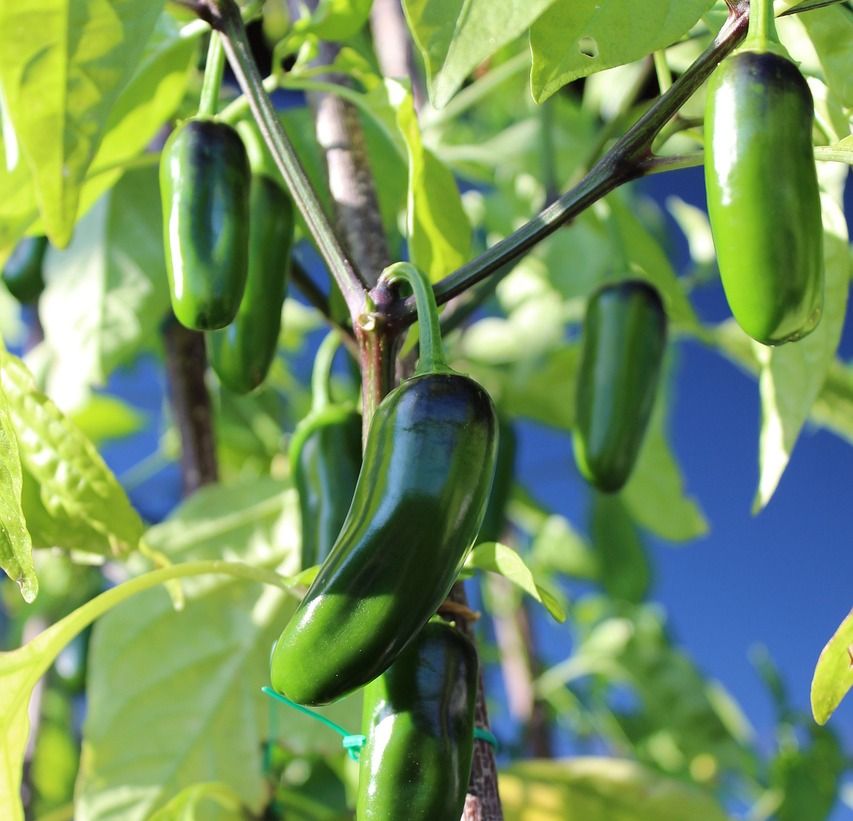
Jalapeno peppers are famous for their tangy flavors and the heat they bring to the recipe. While the tangy flavor is a constant, the heat can vary depending on the jalapeno peppers, going anywhere from low to medium heat, which is pretty close to, or hotter than what you’d expect from usual red chili peppers.
They also bring a somewhat different texture to the recipe, which is usually likable, but suitability can depend on your recipe and preferences.
Jalapeno peppers are usually available in a green color, though it is possible to find them in red as well.
It’s worth noting that while adding jalapeno peppers as an alternative to red chili peppers may not affect the overall heat of the recipe, it can affect the texture and flavors. Jalapenos are notably tangier than red chili peppers.
6. Paprika (Regular Or Hot)
Paprika is a popular spice that’s often used in place of dried red chilies. It is generally available as a powder and comes in a wide variety of formulations. These can range from being low-heat and mild, to fairly hot options.
As such, you have a pretty wide field to consider when using paprika. Depending on the heat you prefer, read the box and pick a suitable variety. Paprika does bring the chili flavors and color, so it’s a useful substitute on those counts.
However, you will have to be careful when picking the heat so that it fits your personal preferences.
7. Poblano Pepper (Dried)
The famous poblano pepper is an excellent substitute for red chili pepper when you want deeper flavors but not the heat.
These peppers are available as dried and have a smoky flavor along with a touch of sweetness. The heat is considered low to mild, making these suitable for most people who don’t want a lot of heat and spiciness in their food. Plus, the deeper flavors of poblano peppers are a delight in their own right, making these a worthy choice.
It’s worth noting that poblano peppers can be significantly more expensive than red chili peppers and several other substitutes mentioned on this list.
8. Hot Sauce
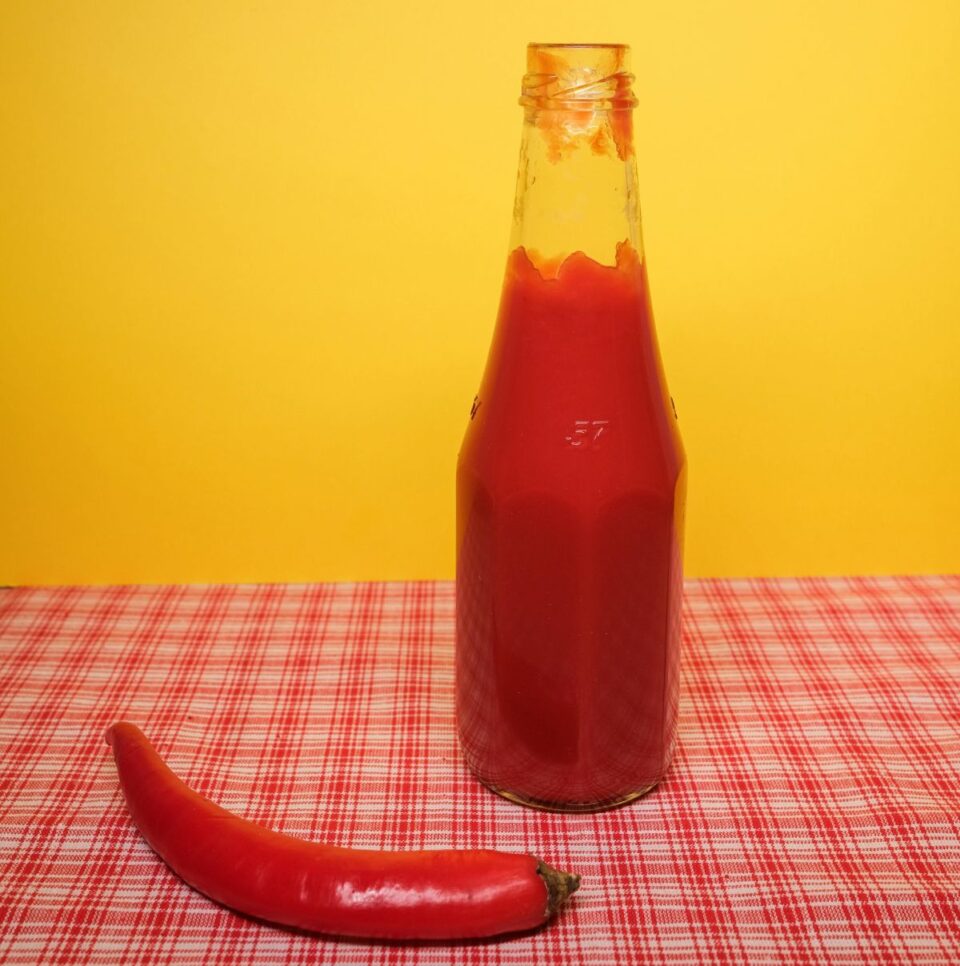
Take your favorite hot sauce and use it to substitute red chili pepper in your recipe! If you go down this road, do expect some changes to the food you’re cooking.
Hot sauce can have a whole laundry list of ingredients which vary depending on the brand and product. So, you may have to make some adjustments to the recipe to accommodate for this change. You can manage the use of hot sauce to get a similar heat and color as red chili peppers — perhaps even a deeper and richer color.
However, do make sure to consider the effect other ingredients can have on the recipe. Also, a chili sauce would be preferable to other hot sauces, if only for the closer association and flavors.
Your Best Bet For A Chili Pepper Substitute
After this long discussion on red chili pepper substitutes, it’s time to hold up, consolidate, and summarize where we stand.
If you want a substitute that’s true to color, texture, and heat, consider something like cayenne pepper, serrano pepper, chili powder, or chili flakes. Paprika is a good choice, and you can get it in both milder and hot variants, so it can suit most heat and spice preferences.
If you want the heat and don’t care much about the texture or color, jalapeno peppers can be a good choice. However, do remember that jalapeno peppers have a strong and distinct flavor and texture, which can affect your recipe.
Banana pepper and poblano pepper are good choices to substitute red chili peppers when you’re less concerned about color, but more interested in keeping the heat low.
Something like hot sauce can come in handy if you’re in a bind. It brings heat and color, though the additional ingredients in the sauce may affect the recipe. So, it’s best to be careful before you choose this substitute.
Finally, it’s worth remembering that there are a lot of varieties of red chili peppers used around the globe. While specific varieties may not be available everywhere, there are classic red chili peppers across the world. These can be good choices for substitutes depending on availability and preference. Examples could be the red chili peppers used in Thai, Indian, Mexican, and Chinese cuisine.

